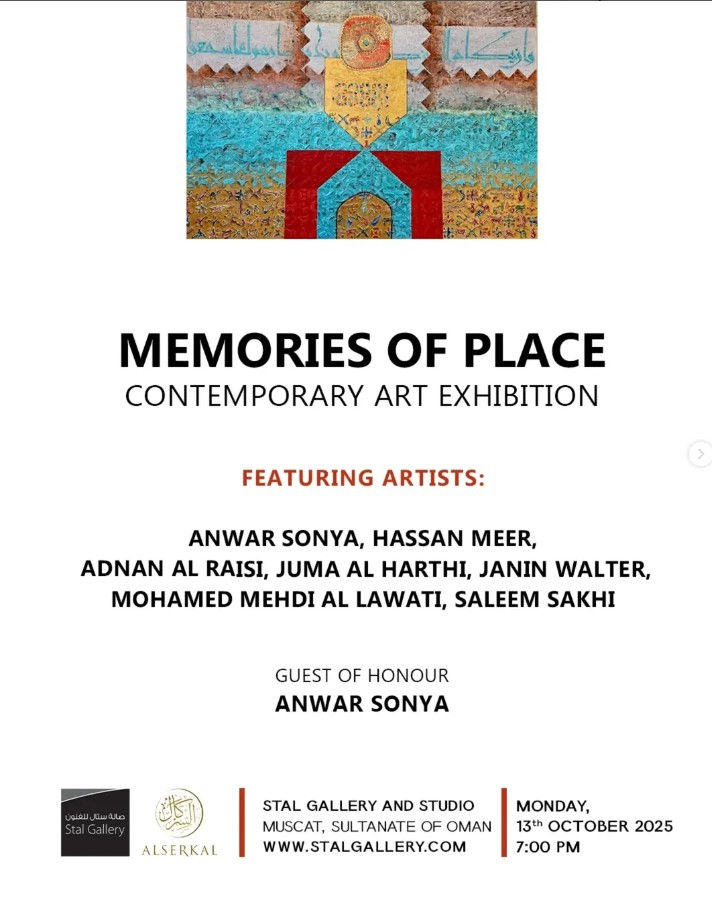EXHIBITION "TELLING TALES"
- Stal gallery
- Apr 1, 2019
- 3 min read
By Artists Debjani Bhardwaj and Rawan AlMahrouqi
Folklore and Fragmented Memories Inspire new Stal Gallery Exhibition “Telling Tales”. Artists Debjani Bhardwaj and Rawan AlMahrouqi create subverted yet magical worlds using the mediums of papercut outs toys, illustration, ceramic sculpture and shadows. Stal Gallery presents ‘Telling Tales’, a duo exhibition of intricate drawings, paper-cuts and installations by Indian artist Debjani Bhardwaj and Omani Rawan AlMahrouqi which opens on April 1 st 2019 and runs for 2 weeks.

About the concept
Bhardwaj chose to explore the parallels between the contemporary human condition and the traditional folk tales of Oman while AlMahrouqi highlights a contemporary social commentary
behind these tales.
Bhardwaj relishes the transformative process that comes from the seemingly laborious act of cutting paper, believing that the minimalism and fragility of her practice enables her to ‘think with her hands’, presenting infinite possibilities.
In ‘Telling Tales’ ¨Bhardwaj creates an alternate universe inhabited by characters from traditional
stories – narratives that provide moral guidance, motivation and inspiration. Seeking to realize the fantastical figures of her childhood, which remain embedded in her subconscious ¨she explores the precariousness of the human condition as portrayed across the canon of storytelling from the Arabian Gulf.“There are endless ways paper can be drawn on, cut, and manipulated, both two-dimensionally and sculpturally,” she said."Fluctuating between the real and the imagined, these delicate creations probe into the precarious line between the possible and impossible. Referencing traditional folk tales from Oman, my works present fleeting moments, dreamlike scenes and a menagerie of peculiar characters performing impossible tasks." Several of Bhardwaj’s works are tunnel books Paper-cut silhouettes are layered and bound together, to create the illusion of depth and perspective, then framed within wooden boxes and backlit to evoke ethereal, otherworldly scenes. Other pieces include installations a praxinoscope.

This drum-shaped device, a successor to the zoetrope ¨it is lined with pictures portraying, in sequence, the progress of a moving object. When the toy is spun, these are reflected upon a corresponding series of mirrors ¨creating the illusion of motion. There is an interactive hand drawn wooden toy inspired by the game of Exquisite Corpses in which the audience can mix and match characters in infinite possible ways to create their own jinn characters.

Rawan AlMahrouqi has created a series of works, drawing inspiration from her surrounding culture as most of her work carries the theme of social commentary. She has made a study of what is the scariest Jinn of them all (“kalam al naas”, or “what will people say about us?”). She plays around the definition of the word Jinn. She creates characters and presents them in the form of charcoal illustrations and life sized wood cutouts, the installation is complete with a motion censored audio
track of overlapping whispers.
Tip:
Telling Tales” an exhibition by the artists Debjani Bhardwaj and Rawan AlMahrouqi. A truly magical, playful, full of surprises educational experience for ages 6 to 96. The gallery reopens after the holiday on the 7th at 10 am -7pm. Groups by appointments please: info@stalgallery.com. Telling Tales Referencing traditional folk tales from Oman, Debjani Bhardwaj’s works present scenes and a menagerie of characters performing impossible tasks, to investigate the human psyche. Rather than adhering to the myths and legends, she has created her own subverted emblematic language. Her familiar yet incongruous, non-linear stories are visually seductive, inviting the viewer to look beyond the surface and to read between the lines. Rawan Al MaHrouqi: Kalaam El Naas.
According to the religions and ancient myths, the Jinn are supernatural, terrifying and invisible creatures living in the same world where we live. It’s said that the Jinn have minds and ability to understand us. Lexically, Jinn is derived from the verb “Janna” which, in Arabic, means “to be hidden”. “Kalam El Naas” translates to “People’s words” or “what will people say about us?”, the artist explores the definition of the word Jinn and interprets it as something we experience everyday.












Comments